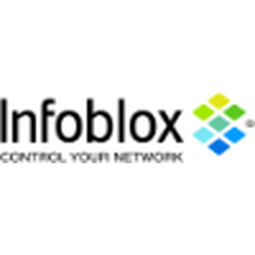Customer Company Size
Large Corporate
Region
- Europe
Country
- Ireland
Product
- Infoblox Grid™ technology
- Infoblox DDI
- Vital QIP
Tech Stack
- DNS
- DHCP
- IPAM
- Microsoft Active Directory
Implementation Scale
- Enterprise-wide Deployment
Impact Metrics
- Cost Savings
- Customer Satisfaction
- Productivity Improvements
Technology Category
- Application Infrastructure & Middleware - Database Management & Storage
- Networks & Connectivity - Network Management & Analysis Software
Applicable Industries
- Finance & Insurance
Applicable Functions
- Business Operation
Services
- System Integration
About The Customer
Allied Irish Banks is a digital banking institution with multiple award-winning applications for mobile banking. It came into existence in 1966 as a result of the amalgamation of three other banks, and currently has more than 300 branches and head-office sites with more than 500 offsite ATMs and merchant devices. With a focus on supporting economic recovery in Ireland, AIB provides banking services to individuals and businesses—particularly small to medium enterprises. Personal banking services range from mortgages to insurance to investments, and business services include credit cards, merchant services, financing, and pension and retirement funds.
The Challenge
The majority of AIB’s banking transactions take place away from the branch counter today, and the bank is working to add technology to its branch locations with self-service kiosks and intelligent deposit devices, and to enhance its mobile and online banking services. AIB’s network supports internal financial systems and external customer-facing systems, which makes the management of Domain Name System (DNS), Dynamic Host Configuration Protocol (DHCP), and IP address management (IPAM) extremely critical. When asked what the consequences of a network failure would be, Daniel Turner, network planner for the Telecoms group within AIB IT, says, “We wouldn’t be able to operate effectively—back to paper transactions!” The bank already had a commercial-grade solution in place that utilized Alcatel-Lucent Vital QIP for internal IPAM and a solution from another vendor for external. But in 2010, it was time to upgrade the system, and Vital QIP upgrades are time-consuming because it has so many components. The Sybase database, for instance, requires an enterprise server on the front end, separate from the appliances that host DNS services. In addition, the per-IP-address licensing is very expensive, especially in an environment like AIB’s where devices are frequently added to the network. So upgrading and continuing to operate the solution was an expensive proposition, and Turner wanted to see if there was a better alternative.
The Solution
AIB compared the three-year projected costs of a major upgrade of the Vital QIP platform with the cost of installing and testing a new system from Infoblox. The numbers indicated that switching to Infoblox was the more economical option, and after a year or two would provide a substantial saving to the business. A proof-of-concept demonstration by Infoblox convinced Turner that in addition to saving money, Infoblox could reduce the time and effort involved in supporting core network services. The Infoblox solution was easy to install and maintain, and it had all the features Turner’s team needed, so AIB went ahead and replaced the Vital QIP system with four Infoblox appliances deployed using patented Infoblox Grid™ technology. Turner points out that, since VitalQIP is an enterprise-grade product, the decision to switch to Infoblox wasn’t about added functionality. “What Infoblox did excellently,” he says, “is give us a solution that replicated the functionality we had, but didn’t require nearly as much attention.” The Infoblox Grid is engineered for efficiency and reliability. Distributed appliances are managed from a central Grid master, and upgrades can be pushed out to multiple locations with the click of a button. Principles of high availability such as a central shared database, back-and-forth health checking, and redundancy make the architecture reliable, resilient, and extremely easy to manage. AIB’s appliances are deployed as “active/active” pairs, which means that they can back each other up and at the same time distribute the workload. This gives them redundancy without having any idle capacity. The boxes run Infoblox integrated DNS, DHCP, and IPAM (DDI). AIB is using them for internal DNS, and they are also integrated with Microsoft Active Directory servers as the central DNS repository. During the installation, Infoblox worked with a partner to export records from the Vital QIP database, using Infoblox transformation algorithms to reformat them so that t
Operational Impact
Quantitative Benefit

Case Study missing?
Start adding your own!
Register with your work email and create a new case study profile for your business.
Related Case Studies.

Case Study
Real-time In-vehicle Monitoring
The telematic solution provides this vital premium-adjusting information. The solution also helps detect and deter vehicle or trailer theft – as soon as a theft occurs, monitoring personnel can alert the appropriate authorities, providing an exact location.“With more and more insurance companies and major fleet operators interested in monitoring driver behaviour on the grounds of road safety, efficient logistics and costs, the market for this type of device and associated e-business services is growing rapidly within Italy and the rest of Europe,” says Franco.“The insurance companies are especially interested in the pay-per-use and pay-as-you-drive applications while other organisations employ the technology for road user charging.”“One million vehicles in Italy currently carry such devices and forecasts indicate that the European market will increase tenfold by 2014.However, for our technology to work effectively, we needed a highly reliable wireless data network to carry the information between the vehicles and monitoring stations.”

Case Study
Safety First with Folksam
The competitiveness of the car insurance market is driving UBI growth as a means for insurance companies to differentiate their customer propositions as well as improving operational efficiency. An insurance model - usage-based insurance ("UBI") - offers possibilities for insurers to do more efficient market segmentation and accurate risk assessment and pricing. Insurers require an IoT solution for the purpose of data collection and performance analysis

Case Study
Smooth Transition to Energy Savings
The building was equipped with four end-of-life Trane water cooled chillers, located in the basement. Johnson Controls installed four York water cooled centrifugal chillers with unit mounted variable speed drives and a total installed cooling capacity of 6,8 MW. Each chiller has a capacity of 1,6 MW (variable to 1.9MW depending upon condenser water temperatures). Johnson Controls needed to design the equipment in such way that it would fit the dimensional constraints of the existing plant area and plant access route but also the specific performance requirements of the client. Morgan Stanley required the chiller plant to match the building load profile, turn down to match the low load requirement when needed and provide an improvement in the Energy Efficiency Ratio across the entire operating range. Other requirements were a reduction in the chiller noise level to improve the working environment in the plant room and a wide operating envelope coupled with intelligent controls to allow possible variation in both flow rate and temperature. The latter was needed to leverage increased capacity from a reduced number of machines during the different installation phases and allow future enhancement to a variable primary flow system.

Case Study
Automated Pallet Labeling Solution for SPR Packaging
SPR Packaging, an American supplier of packaging solutions, was in search of an automated pallet labeling solution that could meet their immediate and future needs. They aimed to equip their lines with automatic printer applicators, but also required a solution that could interface with their accounting software. The challenge was to find a system that could read a 2D code on pallets at the stretch wrapper, track the pallet, and flag any pallets with unread barcodes for inspection. The pallets could be single or double stacked, and the system needed to be able to differentiate between the two. SPR Packaging sought a system integrator with extensive experience in advanced printing and tracking solutions to provide a complete traceability system.

Case Study
Transforming insurance pricing while improving driver safety
The Internet of Things (IoT) is revolutionizing the car insurance industry on a scale not seen since the introduction of the car itself. For decades, premiums have been calculated using proxy-based risk assessment models and historical data. Today, a growing number of innovative companies such as Quebec-based Industrielle Alliance are moving to usage-based insurance (UBI) models, driven by the advancement of telematics technologies and smart tracking devices.
Case Study
Enhancing Security and Compliance in Remitly's Global Money Transfer Service with Fastly
Remitly, an online remittance service, was faced with the challenge of securing its proprietary global transfer network. The company needed a security solution that could meet PCI requirements and protect customers' sensitive transactions through its mobile application. The solution had to be capable of defending against new and emerging attack types without impacting performance. Remitly also had to deal with irregular traffic patterns, such as a sudden spike in account transfers from a small network segment on the Pacific coastline of South America. The company needed to determine in real time whether such traffic indicated an attack or valid requests. A traditional web application firewall (WAF) would not be able to distinguish this traffic, potentially leading to customer frustration if the IP was blacklisted.







